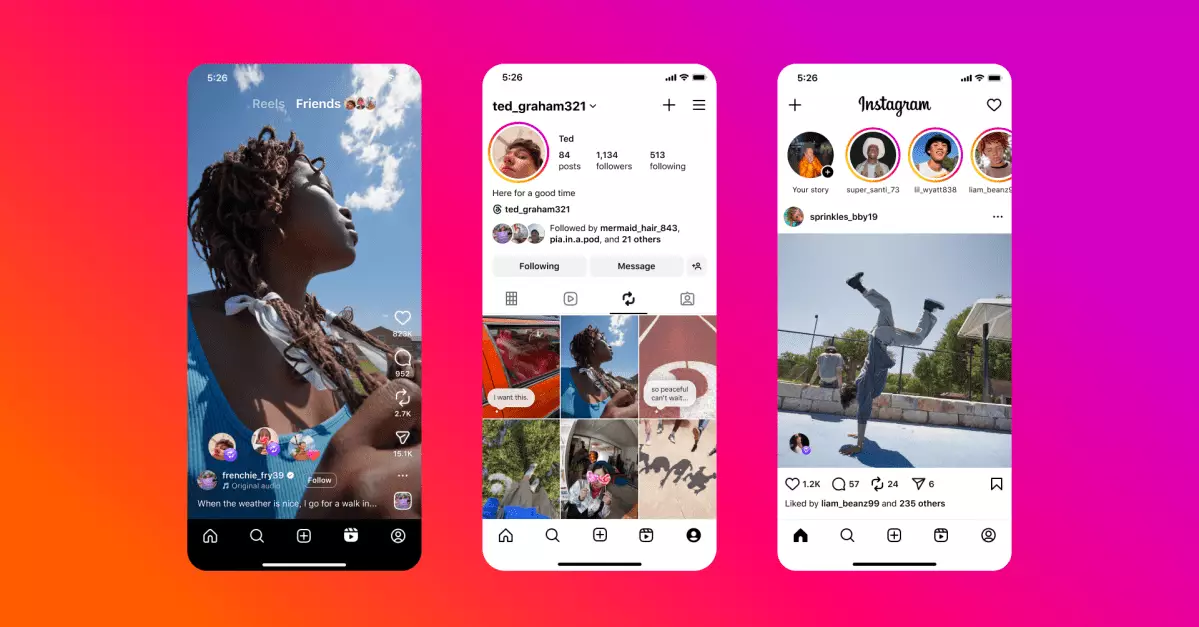Instagram’s latest updates signal a decisive move to reshape how users interact with content, emphasizing short-form videos and more dynamic sharing mechanisms. By introducing a repost feature akin to TikTok’s, Instagram is not merely copying a competitor but strategically reshaping its identity to prioritize rapid content circulation. This change reflects a broader industry trend: social platforms are converging around the idea that mobility, immediacy, and virality reign supreme. The ability to re-share public Reels and posts directly onto profiles or feeds transforms Instagram from a curated photo gallery into an interactive engine that amplifies content and fosters community engagement. For Instagram’s business model, this is a calculated step to increase content distribution and, ultimately, advertising impressions, aligning the platform more closely with TikTok’s viral culture.
However, this shift is as much ideological as it is functional. It raises questions about the platform’s core purpose—has Instagram shifted from a place of personal storytelling to an open battleground for virality? When users can reblog and repost seamlessly, the focus gravitates toward trending content rather than authentic, personal expression. This dynamic could risk diluting the sense of intimacy and original storytelling that initially made Instagram appealing. Nevertheless, for brands and influencers, this provides a new tool to amplify reach; for casual users, it could make engagement more spontaneous and fun.
Introducing Disconnects: The Risk of Overreach and Algorithmic Bloat
Parallel to reposting, Instagram’s introduction of features inspired by Snapchat’s Snap Map reveals an unsettling tendency for social media platforms to invade user privacy under the guise of fun or utility. By allowing users to share a last active location with friends who opt-in, Instagram blurs the lines between social exploration and surveillance. While some will find the feature exciting—especially at events like festivals where real-time sharing enhances the experience—others might notice a creeping loss of control over personal boundaries.
The re-emphasis on activity feeds and interaction tabs, which can now be muted for privacy, demonstrates Instagram’s awareness of user privacy concerns but stops short of addressing fundamental issues. Instead, it offers superficial controls that can be toggled on and off, risking a superficial appearance of choice while still fostering an environment where user data and interactions are more exposed than ever. The platforms’ desire to cultivate a “shared experience” often comes at the cost of individual comfort and autonomy. It’s tempting to see these changes as innovative, but they could also deepen the disconnect between platform policy and user sentiment.
Who Truly Benefits from These Updates?
As Instagram pushes further into TikTok territory, the platform’s original ethos—sharing curated moments with friends and family—gets overshadowed by the pursuit of virality. The introduction of features like reposts and location maps seems designed to keep users engaged for longer periods and to keep content circulating algorithmically. While they serve the platform’s goal of increasing user interaction and ad revenue, they may alienate those who preferred Instagram’s simpler days.
Content creators, in particular, are likely to feel the squeeze. The shift toward reposts might democratize the flow of viral content, but it also risks making individual voices secondary to trending clips. Creators who built followings on the basis of personal storytelling might find themselves drowned out by the noise of reposted content and algorithmically curated feeds. Equally, casual users may feel overwhelmed by the bloat of features that distract from genuine friendships and authentic sharing.
From a broader perspective, these incremental adjustments reflect a platform that is trying to adapt rather than innovate meaningfully. Instagram risks becoming a chaotic blend of the best features of TikTok, Snapchat, and its own legacy, but this scrambling may obscure what originally made it appealing—its focus on carefully crafted personal moments. Whether these features elevate the platform or diminish its unique identity remains to be seen, but one thing is certain: Instagram’s push for competitiveness might come at the expense of its core community.

